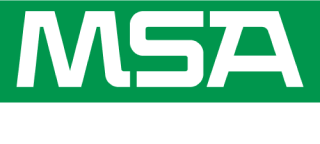
If you’ve been following the same standard for 40 years and been just fine, you don’t need to do anything differently now just because the Occupational Safety and Health Administration (OSHA) overhauled its ruling a few years ago, right? Wrong. When OSHA revised the 40-year-old Electric Power Generation, Transmission, and Distribution standard for the first time in 2015, the organization hoped to more effectively protect utility workers from vertical hazards unique to their industry, while helping to reduce the projected 118 serious injuries and 20 deaths annually.
Why the change? Although general industry and construction standards also got an update, OSHA found that, because of risks inherent to people working at a height around electric power, more consistency was needed with the general industry standard. The result was the updated final rule, 29 CFR 1910.269, Electric Power Generation, Transmission, and Distribution, aiming to prevent not just falls but also burns, arc flash, and electric shock – which can result in serious injury and death amongst people working at a height in the utilities industry.
Still having trouble getting used to the changes or remembering what changed? Here are five items to keep in mind, inspired by the revised standard. It’s never too late to comply—and stay safer.

Download this free white paper for more details on this standard’s application to vertical hazards in the utilities industry.
Download the White Paper1.Engage in open communication pertaining to safety—and according to the standard.
Before any work starts, host employers are to notify contract employers of potential hazards—including electrical ones—or other environmental factors that workers could encounter. Contract employers, in turn, are expected to communicate this safety-related information to subcontractors so everyone is on the same page and prepared for any dangers at the work site. Contractors and subcontractors are responsible for reporting back any hazards they identify on the job. The standard also dictates how this information should be effectively communicated.
2. Calculate minimum approach distances.
Another responsibility of employers of workers in high-voltage environments is keeping them a safe distance—known as the minimum approach distance (or MAD)—away from energized lines and equipment. Just how do you calculate MADs? The revised standard offers updated methods to guide the engineering analysis:
- At a minimum, MADs have to match the values in Tables R-9 or V-8 of the standard
- Proper insulation is necessary for workers to cross the MAD
- “Determine the maximum anticipated per-unit transient over-voltage, phase-to-ground, through an engineering analysis or assume a maximum anticipated per-unit transient over-voltage, phase-to-ground, in accordance with Table R-9”
3. Use the right fall protection systems the right way.
Every worker who could potentially fall should make sure they are using the correct kind of fall protection equipment for their setting and the type of work they’re doing:
- Personal fall arrest systems aim to stop free-falls of over 6 feet
- Positioning equipment allows hands-free maneuvering for workers on raised vertical surfaces
This goes for both unqualified and qualified climbers, a major change from the previous allowance, now making it necessary for all climbers to use 100% tie-off and changing the way many companies do business.
The updated standard also addresses when not to use fall protection systems. If the system could be impossible to use or cause more risk to a worker, OSHA allows for an exception to be made.
4. Supply any workers who might encounter electric arc hazards with adequately rated equipment.
In utilities, exposure to arc hazards from power lines is a regular occurrence and can cause deadly falls as well as burns. It’s the employer’s job to determine workers who might be at risk of encountering arc flash with an estimated heat energy of more than 2.0 cal/cm2 and provide them with equipment and protective clothing that can, at the very least, stand up to that estimate. Also, to pass the test and be considered “arc-rated,” fall protection equipment has to pass a drop test following exposure to an arc with 40±5 cal/cm2 of heat energy.
5. Don’t forget about electrical conductivity.
This one’s a bonus because it’s not part of OSHA’s revised standard, but it’s no less important. Because industry standards don’t address conductivity, there’s a lot of confusion over this topic. Simply put, conductivity is “a product’s ability to conduct electricity.” It’s important that your arc flash fall protection equipment not only protect workers from “high heat and energy” but also from conductivity. Keep in mind, though, that efforts to limit conductivity by coating metal hardware with PVC or maintaining a MAD with fall protection equipment featuring metal components may not eliminate all risk. Talk to your equipment provider about the best solution and equipment to help protect workers from conductivity.
Keeping up with updates to industry safety standards can be a lot, so don’t go it alone. Find a protective equipment partner that will keep you trained and equipped with the latest and greatest equipment. Download the free white paper below for more details on this standard’s application to vertical hazards in the utilities industry.

Explore Utilities solutions from MSA
EXPLORESources:
https://www.osha.gov/news/newsreleases/national/04012014
https://www.osha.gov/sites/default/files/publications/OSHA3872.pdf
https://www.osha.gov/laws-regs/regulations/standardnumber/1910/1910.269AppB







